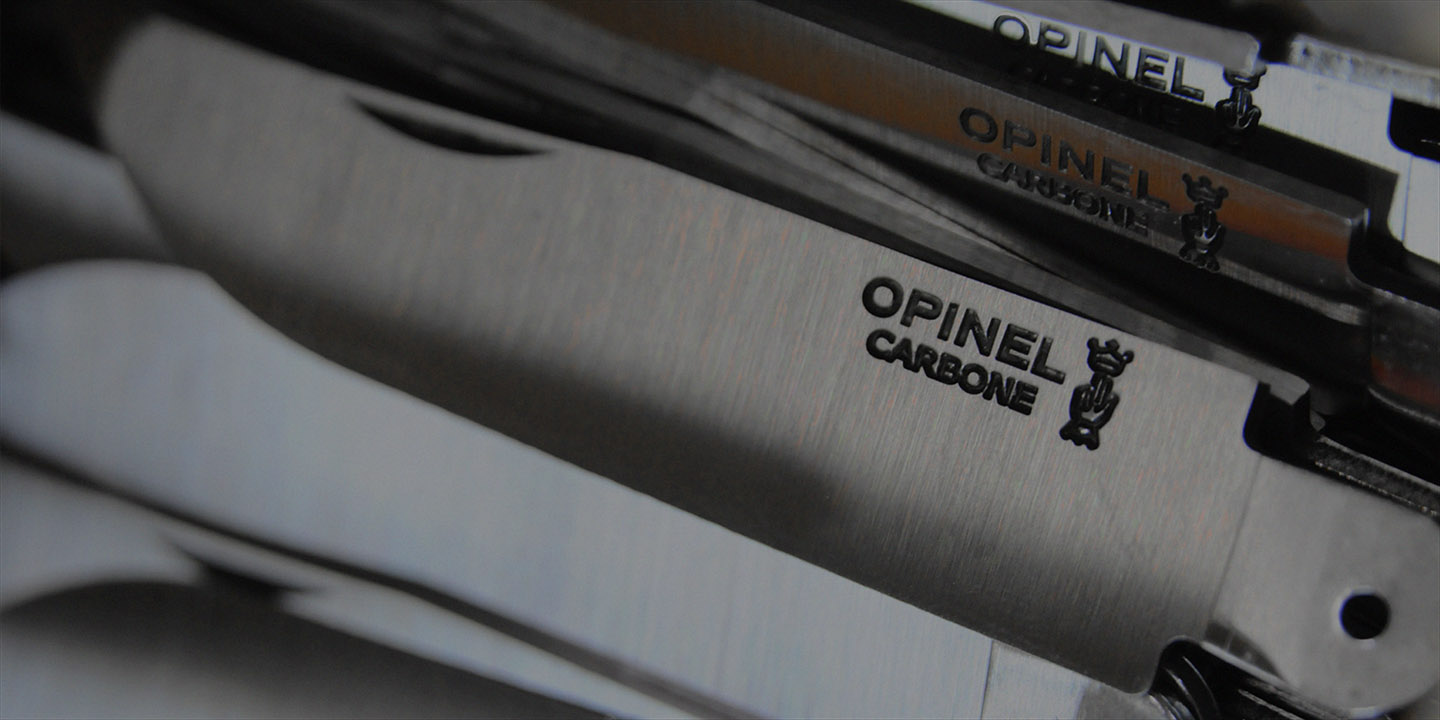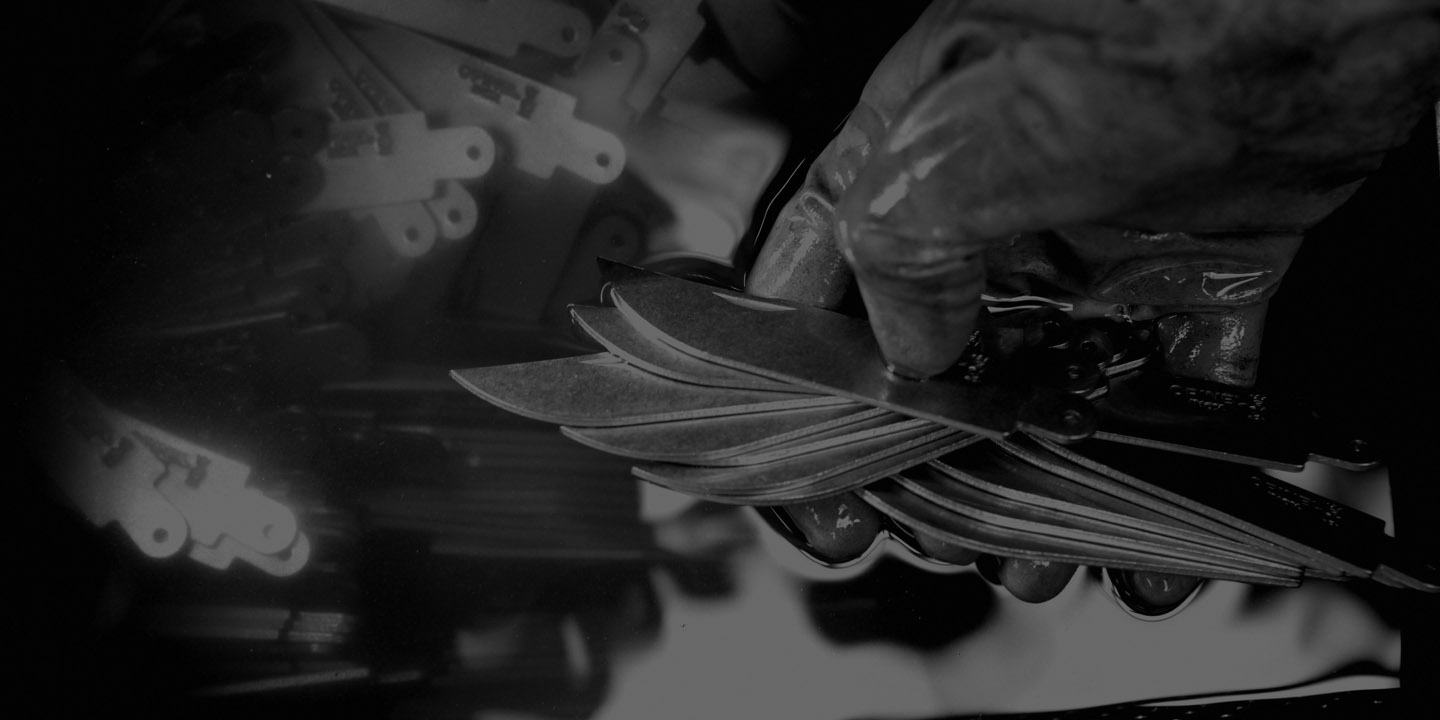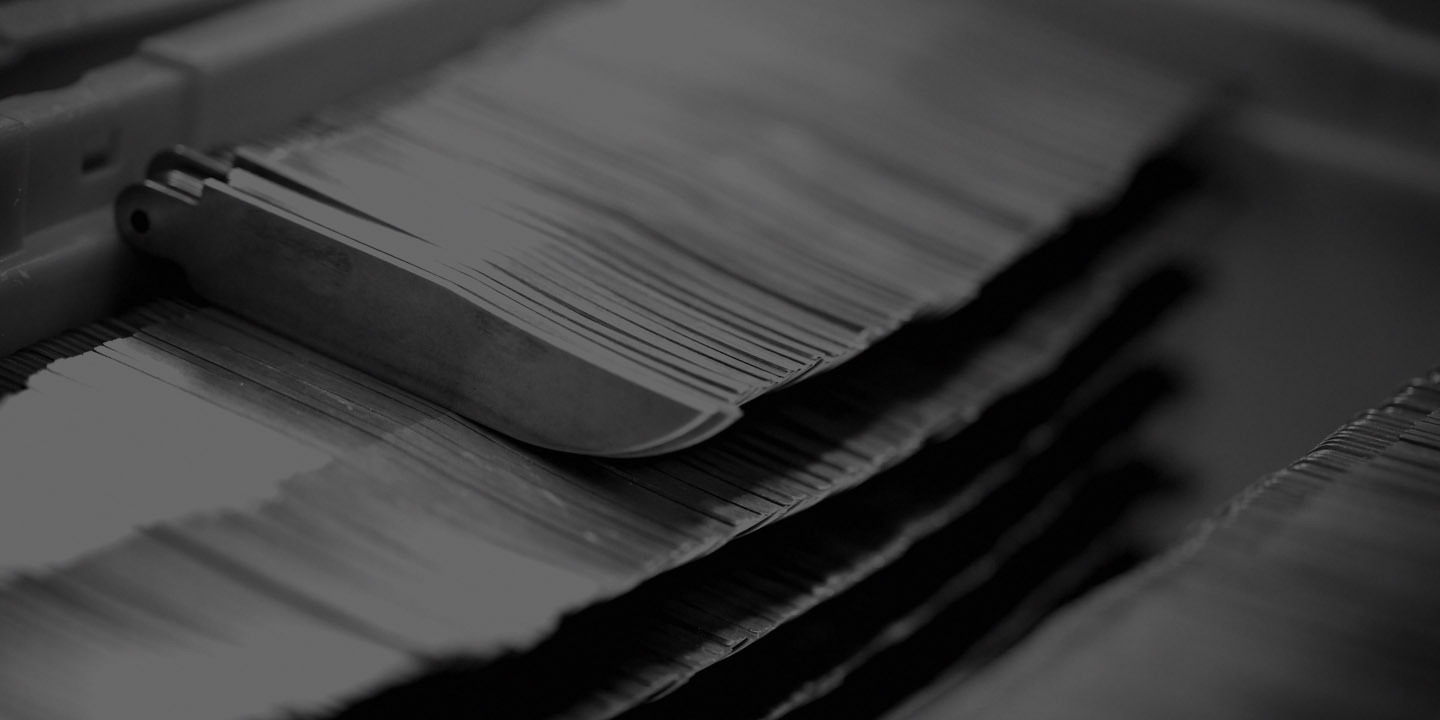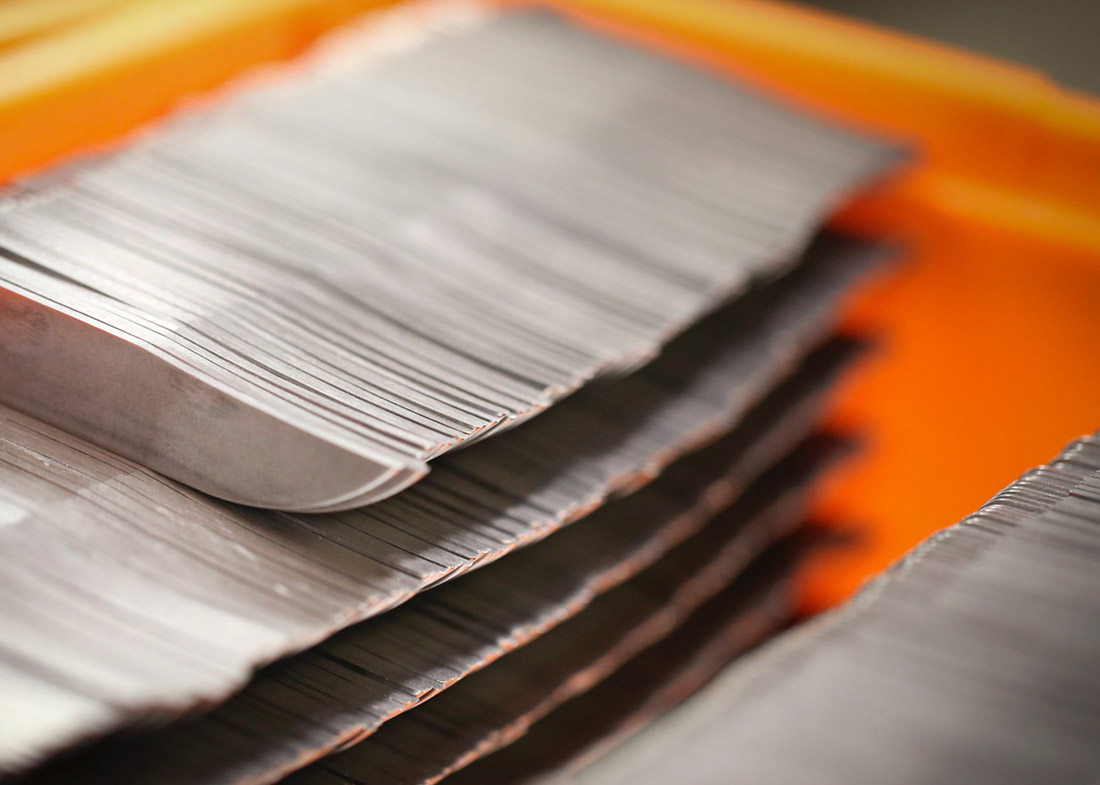
A pioneering inventor
It was in a corner of this workshop, a corner that was given to him by his disbelieving father, that Joseph Opinel developed his closing knife. Daniel Opinel believed in the craft of edge-tool making above everything because making tools was serious work. Of course, to keep customers happy, sometimes you could "knock together" a few pocket knives. But was there really a future in manufacturing them? Joseph thought so.
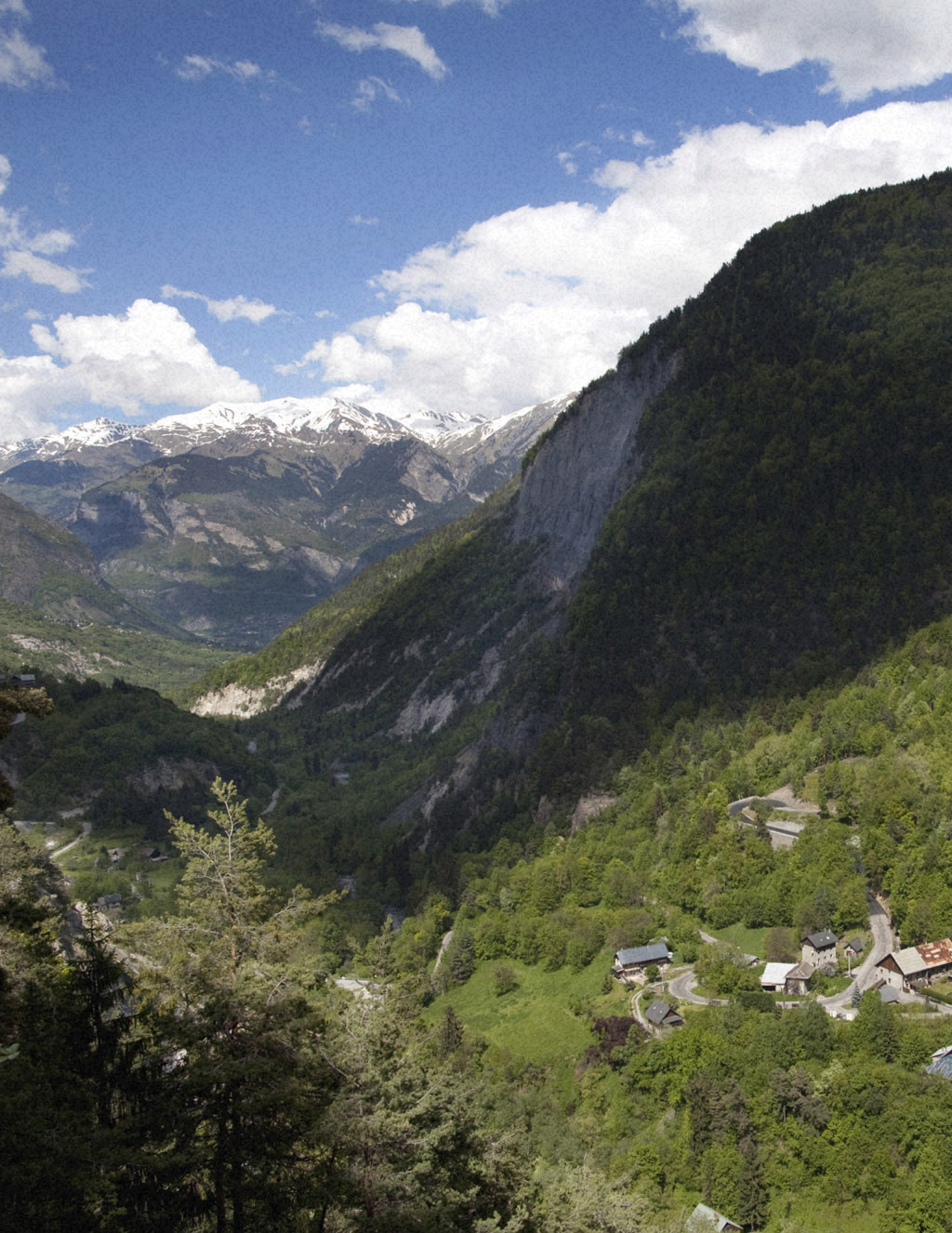
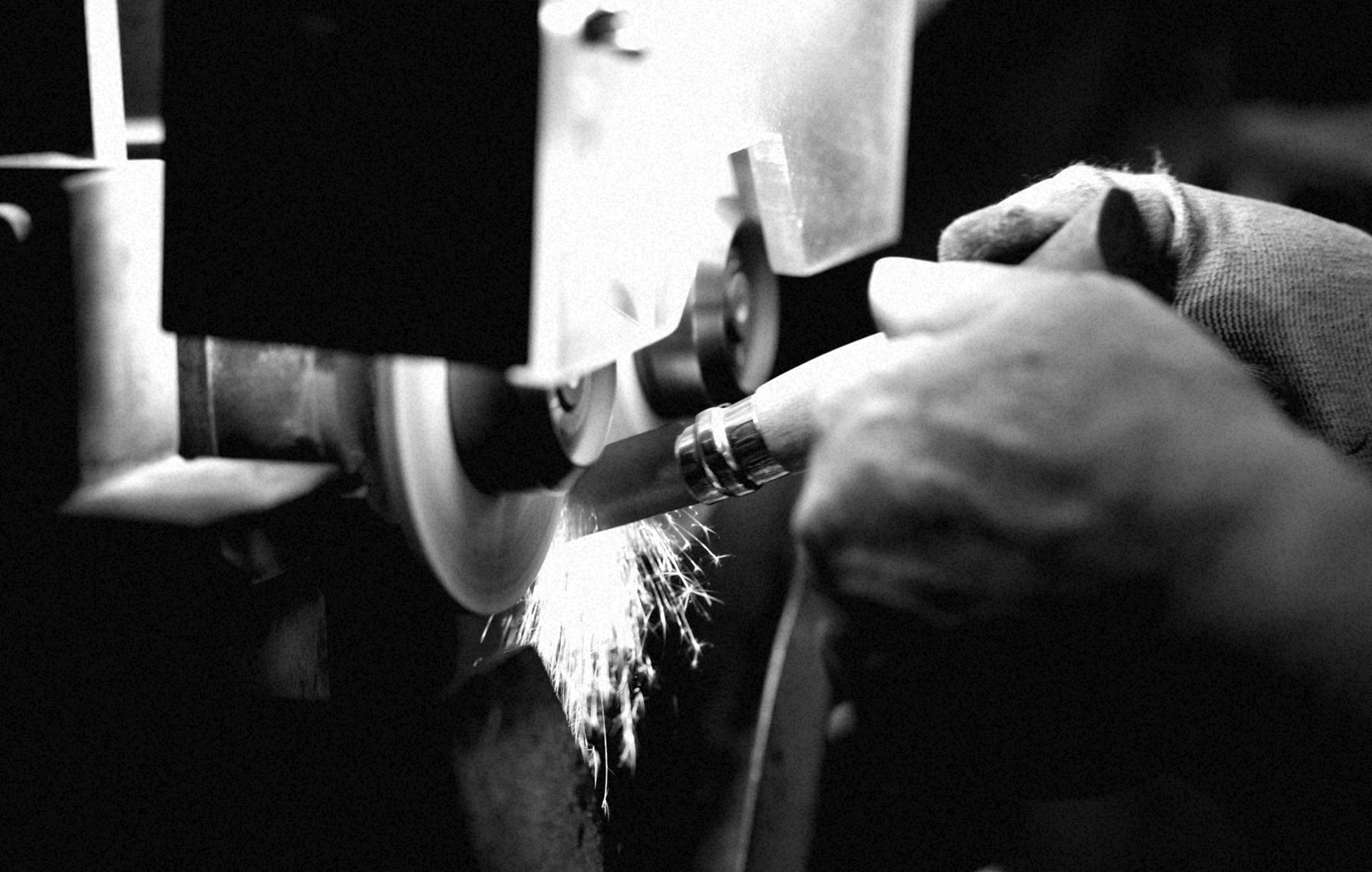
The blade

In knife making, there is no ideal steel but a multitude of grades that are suited to different knife purposes. By definition, steel is an alloy combining iron and carbon. When no other element is added, it is commonly called carbon steel. However, this grade is very sensitive to oxidation.
To compensate, at least 10.5% or more chromium is added. This steel is generically known as stainless steel. The added chromium creates a superficial and extremely thin oxide layer, called a passivation layer which protects the blade from corrosion.
The higher the carbon content in steel, the harder it gets through heat treatment. Hardness guarantees a long-wearing cutting quality. It is therefore quite tempting to use a high carbon content grade.
There are however two limitations on increasing the carbon content:
The harder the blade, the more fragile it becomes. This is true for both types of steel, whether it is carbon steel or stainless steel.
A high carbon content in stainless steel reduces its resistance to corrosion. Carbon tends to combine with chromium to form chromium carbides. As a carbide, chromium loses its protective properties against oxidation.
It is important to note that, for a similar hardness, a stainless steel containing chromium carbides will be more resistant to abrasion. This property ensures long-wearing cutting quality. We aim for 57 to 59 HRC for our blades. Selecting a steel grade is always a compromise between mechanical strength and resistance to corrosion. Opinel's years of experience and expertise in the field has led us to choose two main grades.
Selecting a steel grade is always a compromise between mechanical strength and resistance to corrosion. Opinel's years of experience and expertise in the field has led us to choose two main grades.
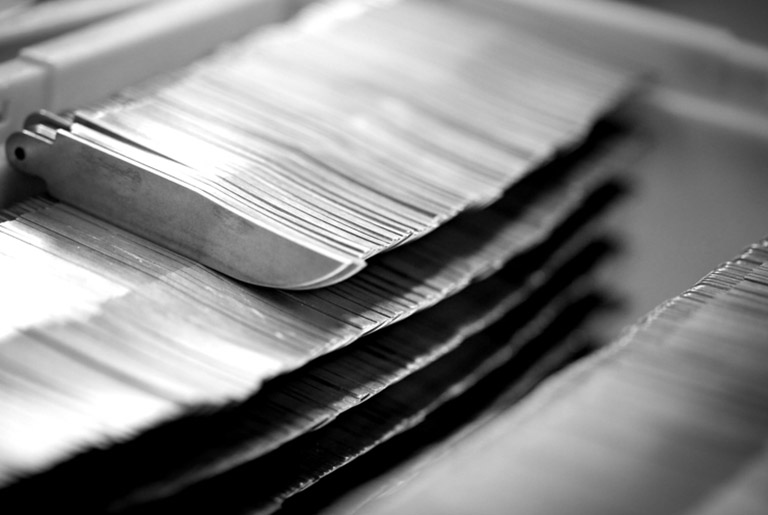
A high carbon content in stainless steel reduces its resistance to corrosion. Carbon tends to combine with chromium to form chromium carbides. As a carbide, chromium loses its protective properties against oxidation.
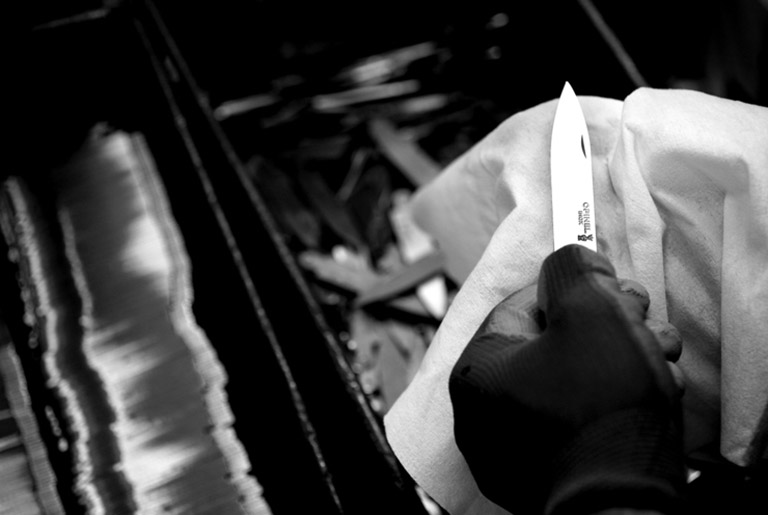
It is important to note that, for a similar hardness, a stainless steel containing chromium carbides will be more resistant to abrasion. This property ensures long-wearing cutting quality. We aim for 57 to 59 HRC for our blades.
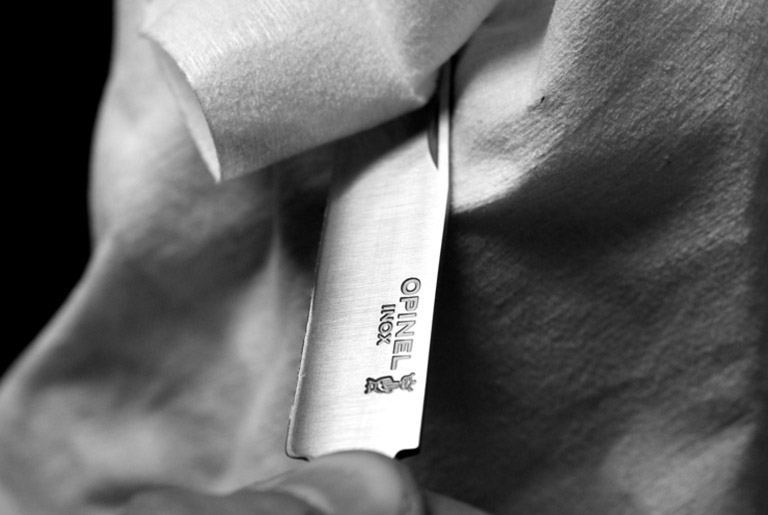
Selecting a steel grade is always a compromise between mechanical strength and resistance to corrosion. Opinel's years of experience and expertise in the field has led us to choose two main grades.
Handle
The shape of the traditional Opinel knife has remained unchanged since its design by Joseph Opinel in 1890.

The wood
The knife's wooden haft features a deep groove. Only highly durable wood is suitable for shaping and producing hard-wearing hafts.
For this reason, beech wood, locally called “fayard”, is mostly used. Its grain is fine and homogeneous, providing excellent mechanical strength.
Noble woods are used for certain ranges such as olive, oak, walnut or boxwood... Birch and hornbeam are light woods with fewer veins which are used for coloured hafts. Wood is a living material which will adapt and react to its environment. It expands and shrinks depending on moisture levels in air. When exposed to direct sunlight, its colour will become lighter or darker.
Furthermore, the appearance of the wood may change drastically from one tree to another within the same variety. Therefore each haft is unique for its tone, veining and knots.
Because OPINEL wants to avoid negative environmental impact, we use wood from local sustainably managed forests. So our main wood supplier for Opinel knife manufacture is based in the Jura region.

The finish
To protect our hafts from external wear, there are two available finishes: buffing and varnishing.
Hafts shaped from rare and precious tree species are buffed with wax applied with a cotton disk. For every other wood, we apply a varnish which has been selected for its highly protective properties against moisture and staining.
The varnish is tinted for the carbon range and clear for all the other ranges To create coloured hafts, we first apply a water-based wood stain before the varnish.
Take care of wooden handles
To clean horn hafts, we advise you to use a sponge or a clean cloth moistened with some warm water (20°C), then to wipe it off immediately with a dry cloth.
You should absolutely avoid running it under water and letting water penetrate into the groove, as this will make the haft warp.
Take care of horn handles
To maintain your horn haft, we strongly recommend you not to apply any products to it, as a simple, clean microfibre style cloth is all you need to buff the haft.
If there are any small cracks, you can wipe the haft with a clean, soft cloth using a few drops of vaseline oil, but this treatment should be sparingly used.
We advise you to avoid any contact with hot water, cold water or any sudden change in the temperature from heat to cold, or sudden atmospheric humidity changes from humid to dry.
safety ring
The saftey ring has been added in 1955, it has been invented by Marcel Opinel

The fixed ferrule was needed to firmly rivet the blade to the haft.
In 1955, Marcel Opinel, who had been working on improving the safety of the knife, invented the Virobloc® system. He added a rotating ferrule which slid onto the fixed ferrule, closing the groove and thus locking the blade in the open position.
The idea was simple enough but hard to achieve. Conical shape, balance between steel strength and elasticity, changes in size due to the wooden haft and the rivet... A real challenge!
In the 90s the Virobloc® system was modified to lock the blade in the closed position. At first. it was only used on a few models, but then was included on all models in 2000.
